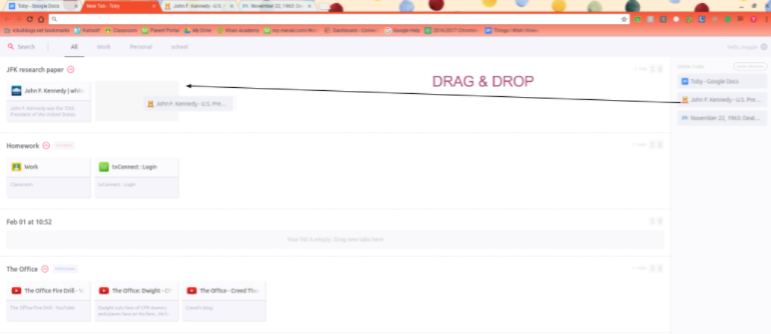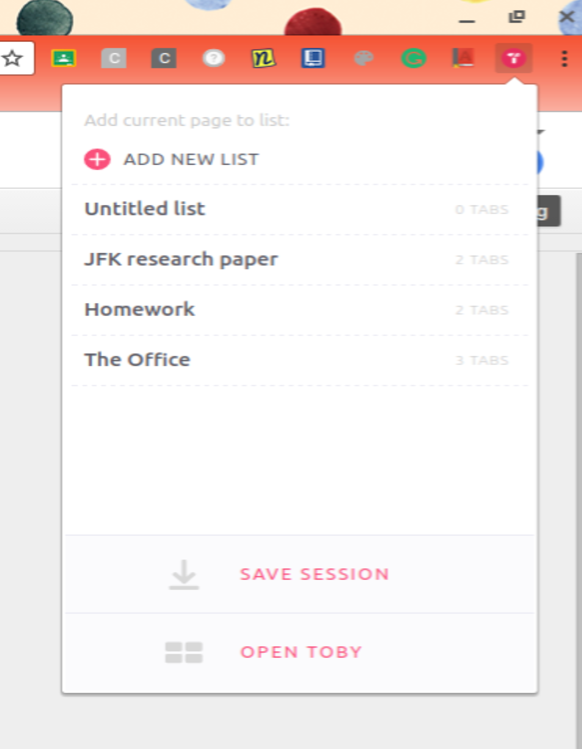Picmonkey is an app for chrome and desktop that allows you to edit photos and make collages using unique graphic design features. The best part of Picmonkey is that it is completely free to use! (Some features are locked, but you can upgrade to Royale Membership for full access to them) Some key features that Picmonkey offers is that you can add frames, themes, overlays, and touch up your original photo.
Downloading & Accessing Picmonkey
To download Picmonkey you need to go to the chrome web store. Once you have accessed the chrome web store, type in the search bar “pic monkey”. Click on the first option under “Apps”. Click on the button “add to chrome” and you are ready to start using Picmonkey. To access Picmonkey, go to the page where all your apps are listed. The Picmonkey app icon should be towards the top of your list (it looks like a monkey so it shouldn’t be too hard to find)
I Downloaded Picmonkey…Now, what?
Once you have opened the app, click on the button that says ‘edit a photo’. This will bring you to the main interface of Picmonkey. This page is where you can begin editing your photo to perfection!
How do I Upload My Photo Into the Editor?
To upload a photo to Picmonkey click on the drop down arrow on the button titled “Open” at the top left of your screen. A drop down menu should appear with many options as to where to upload your picture from (Facebook, Pixlr, OneDrive, etc) Once you have selected a photo and successfully uploaded it to the Picmonkey you are ready to proceed with editing.
What Can I do With Picmonkey?
Picmonkey offers many different options when editing photos. In the toolbar to the left of the screen, there are several tools to use such as Basic Edits, Effects, Touchup, Text, Overlay, Frames, Textures, Themes, and Templates.
- Basic Edits – this tool is used to do basic editing such as cropping, resizing, or rotating photos. Some more options in this tab are to sharpen photos or add color to them.
- Effects – this tool is used to add gorgeous effects to your photos that make them stand out above the rest.
- Touchup – the purpose of this tool is touch up any blemishes when editing a photo that has a human face in it.
- Text – the text tool can be used to add text boxes to your uploaded image; also found within this part of Picmonkey is different font types.
- Overlay – the overlay tool is used to add more elements to your photo. You can either add your own or choose one of the ready-made overlays.
- Frames – the frames tab is where you will find several different types of frames to add to photos.
- Textures – this tool is used to add different textures to your pictures such as space, burst, and light trails.
- Themes – the theme tool is where you can choose a theme (these consist mostly of festive themes) and add elements of that theme to your chosen picture.
- Templates – this tool is used to create posters, diagrams, invitations, and cards (most templates are only available for Royale)
Saving Photos On Picmonkey
To save your design, click on the Save button in the top left corner of your screen (to the right of the ‘open’ button). Once you have clicked this button, you can customize the name of the file and resolution. Click “Save to my computer” to save it Onedrive or Dropbox. If you don’t have either application you can simply download your image.
Sharing Images From Picmonkey
To share an image/photo click on the “Share” button to the right of the Save button. When you click this, Picmonkey will allow you to choose what platform you would like to share it on (Facebook, Twitter, Pinterest, etc). You also have the option to caption your photo before sharing. Click on the button titled “Do it” once you have selected where you want to share the image to. Your photo has now been shared on the app of your choice.
Happy editing everyone!


